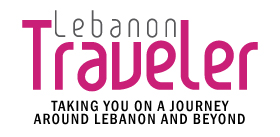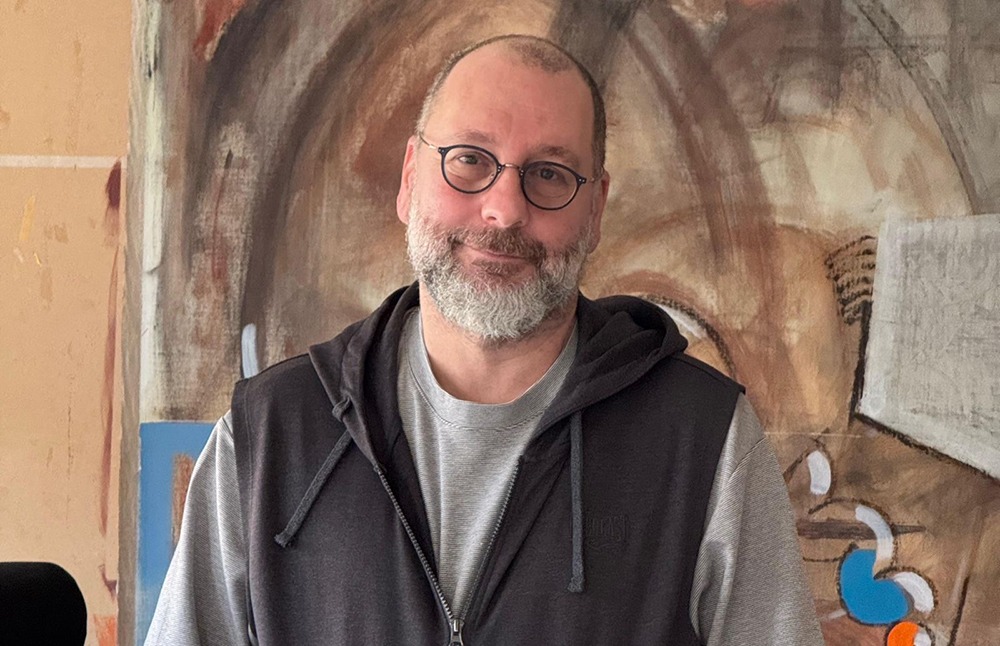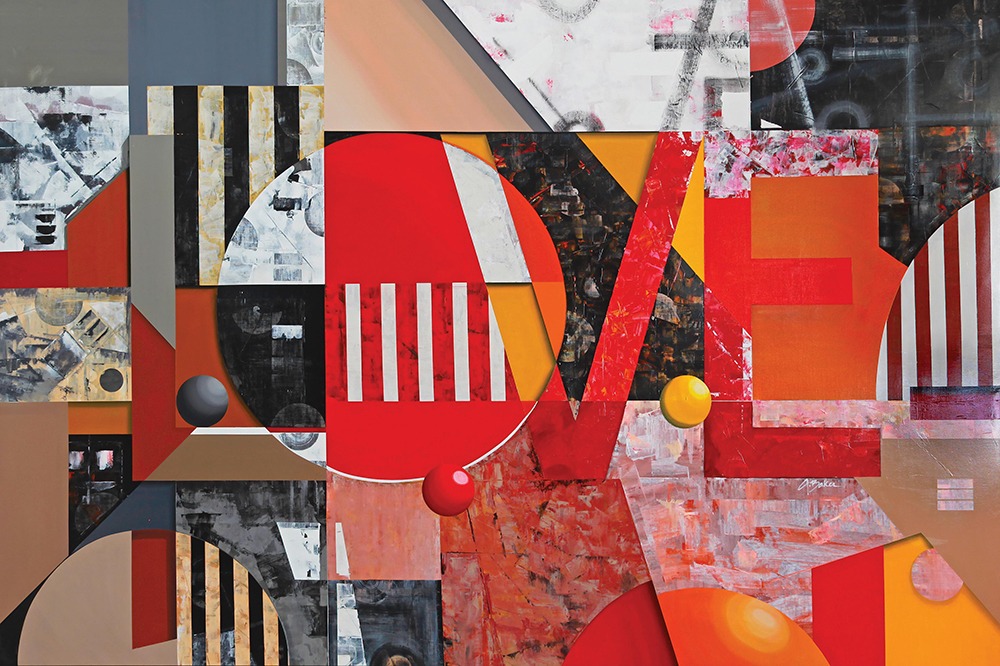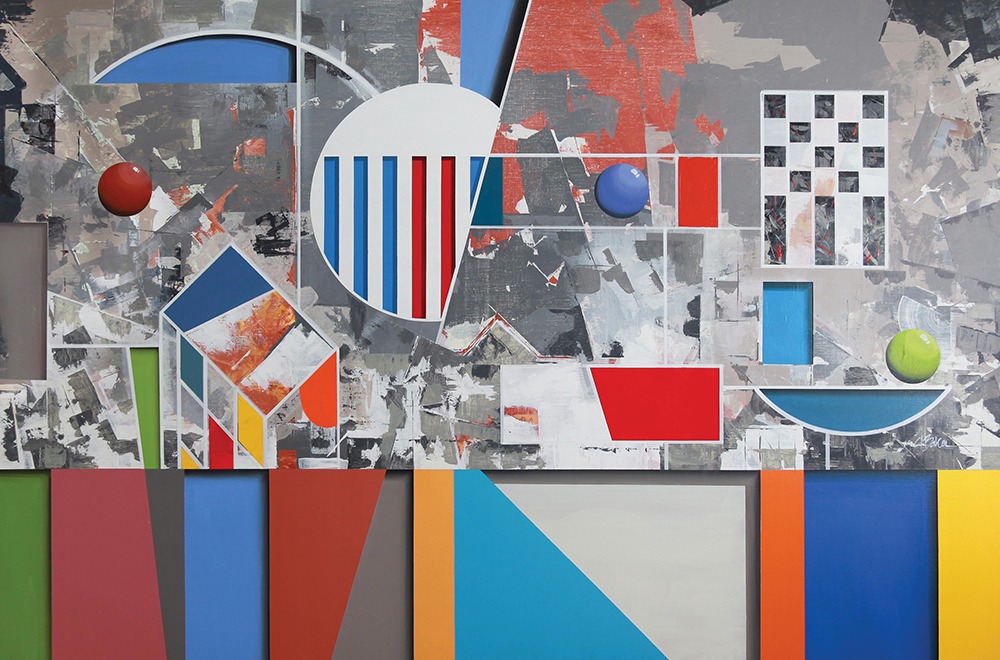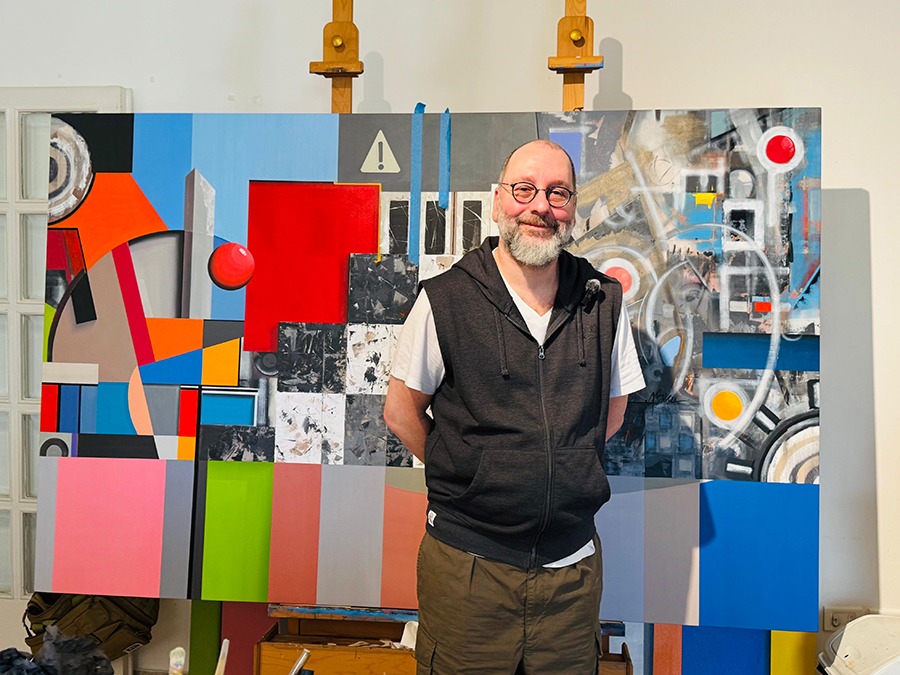Ghazi Baker’s art doesn’t ask to be understood — it demands to be experienced. With a background in architecture and a self-taught approach to painting, his work blends discipline with disorder, intellect with instinct. Based in Beirut, Baker creates dense, layered pieces that reflect the chaos, tension and complexity of his surroundings. In this exclusive interview, we learn more about his work, what influences his creative output and his upcoming exhibition.
When did you first realize art was your path?
Art has always been present running as a parallel current along everything I did. As a child, I filled sketchbooks with characters and scenes. Later, while studying architecture, I realized creating wasn’t just a hobby, it was essential. Architecture gave me structure, but art gave me freedom. Architecture trained my eye. It taught me to think in systems, to balance chaos with order. That’s why my work is layered, intricate, spatial. Even when it looks chaotic, there’s an architectural logic beneath it.
In what way does your Lebanese identity influence your work?
Being Lebanese means being many things at once — East and West, tradition and rebellion, beauty and conflict. That contradiction is in my DNA, and it naturally spills into my work. There’s a density in my pieces that mirrors the emotional and sensory overload of Lebanon.
How would you describe your relationship with Lebanon?
It’s a mix of love and frustration — sometimes even grief. Lebanon inspires and exhausts me at once. I’m drawn to its chaos and history, but I also struggle with its instability. That tension shows up in my work through symbols, fragmentation, and hidden codes. It’s never a passive relationship; it’s something I constantly engage with.
Who has shaped your creative philosophy?
I’m inspired by artists like Basquiat, Bacon and Schiele who challenge norms and embrace contradictions; they showed me that rawness and refinement can coexist. Comic-book legends like Moebius and Frank Miller taught me about line and world building. Philosophers like Foucault and Derrida shaped how I think about multiplicity and meaning. I’m attracted to art that doesn’t explain itself but, instead, invites the viewer to experience a mental or emotional haze.
What have international shows taught you?
Every show has its own energy. Exhibiting in cities like Paris, New York and Miami has been eye opening. It’s fascinating to see how different cultures interpret my work. Exhibiting at Art Basel in Miami was especially memorable; the conversations and diversity of perspectives reminded me that art can connect across borders where politics often can’t.
What’s next for you?
I’m always experimenting — pushing my visual language in new directions. Lately, I’ve been exploring new media, moving toward sculpture or installation, but I still holding onto that hand-drawn, visceral quality. I’m also preparing for upcoming shows that delve into psychological and surreal themes. Eventually, I’d like to create immersive environments — spaces where viewers don’t just look at the work but step into its world.
My solo exhibition “In Entropy” at Mark Hachem gallery is opening on Thursday 22 May 2025 and runs until 10 June 2025.
If you enjoyed reading this interview with Ghazi Baker, check out our article on the work of Lebanese ceramist Zeina Bacardi.
Loading